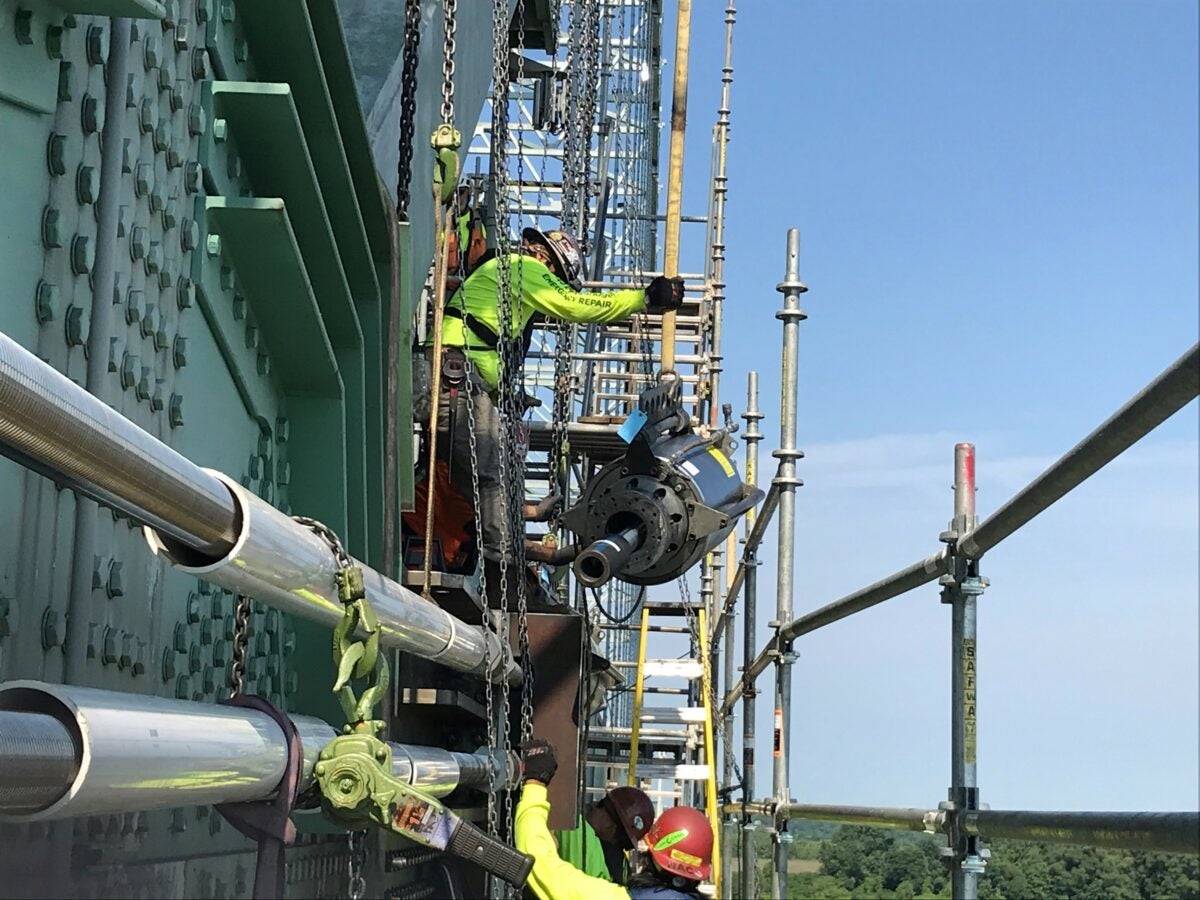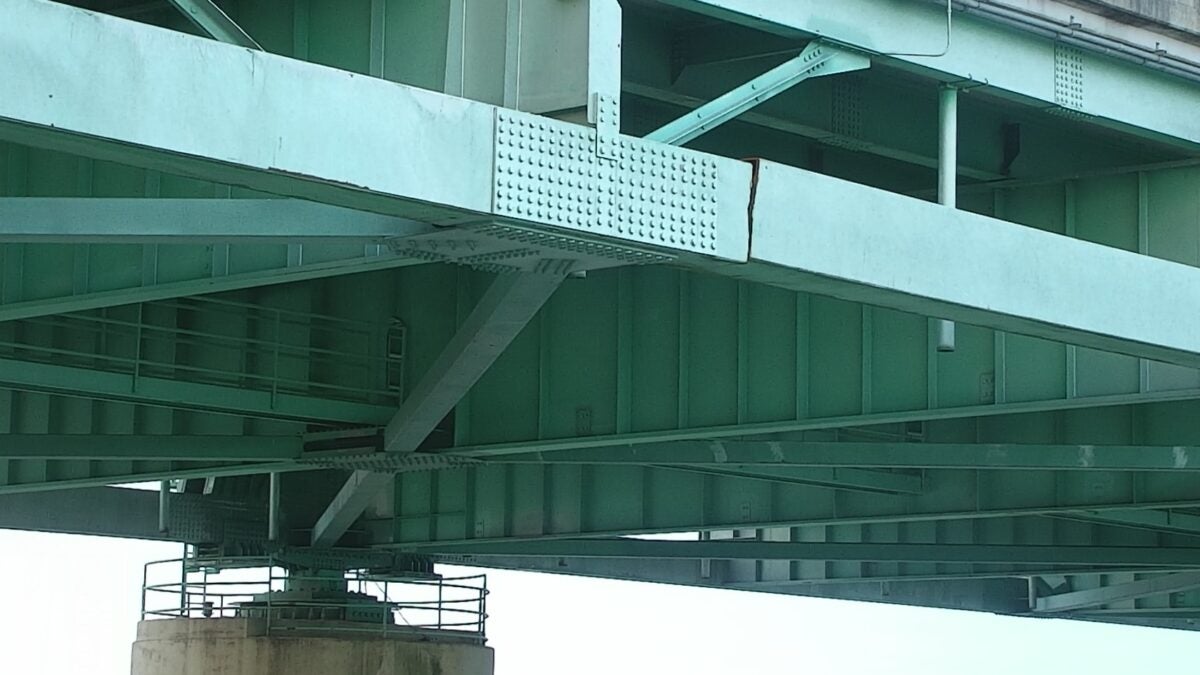Updated Tuesday, August 3, 2021: Transportation officials reopened the westbound lanes of the Hernando de Soto bridge soon after this article published, ahead of schedule. All lanes are now open in both directions.
Original article:
The trucking industry was dealt a big blow when the Arkansas Department of Transportation (ARDOT) shut down the Hernando de Soto Bridge on May 11. Inspectors found a major fracture in a deck beam, compromising the stability of the Interstate 40 bridge between Memphis, Tennessee, and eastern Arkansas.
The closure has put the most pressure on carriers of fuel, asphalt and other products that are sourced and delivered regionally in the mid-South. They typically have to load at one spot, then deliver to multiple locations in the region, making it extremely difficult to maneuver around the closure.
Related: ‘Painful mess’: I-40 bridge closure costing trucking industry $1M daily
“If you’re in the regional economy there and you have historically relied on making multiple trips across the river in a shift, then you are still unable to do what you had otherwise done before,” Sharon Newton, president of the Arkansas Trucking Association, told FreightWaves.
According to Newton’s calculations, the trucking industry is losing $936,000 a day because of the closure. This is only a slight improvement from just over $1 million a month ago. However, transit times, which were as much as two hours for some carriers at the onset of the closure, have been cut to an average of about 15 minutes over the past several weeks.
Al Heringer IV, vice president of Star Transportation LLC in Jonesboro, Arkansas, has certainly felt the pain.
“We’ve tried to adjust the best we can, but it’s hard to move those guys back and forth on their schedules lots of times. We capitalize where we can,” Heringer told FreightWaves.
He’s keeping his chin up, saying that the situation has eased up a bit. The late June paving of an additional lane on the ramp coming off I-55 seemed to relieve some pressure going into Arkansas. But Heringer said some days are better than others.

“Sundays and Mondays we’re not having hardly any trouble getting back and forth,” Heringer stated. “But Friday and Saturday, those are heavy traffic days and it’s still a problem.”
Just like everyone else, Tennessee Department of Transportation (TDOT) Commissioner Clay Bright wants the bridge reopened as soon as possible. He told FreightWaves that TDOT has been taking a “full-court press” approach to the repairs ever since the bridge was closed.
He’s been on multiple calls each day with consultants, contractors, design engineers, and ARDOT and federal highway officials to make sure the repairs are done as efficiently and as safely as possible. TDOT personnel have been sifting through hundreds of pages of reports along the way. The process has been challenging because nothing like this has ever happened to the bridge.
“This process is not something that anybody else had ever done before, so the fix wasn’t sitting on a shelf. The response wasn’t sitting on a shelf,” Bright explained. “Everybody jumped in and rolled up their sleeves.”
As soon as the bridge was closed, crews had to make sure barge traffic could safely flow under it. This took a few days to achieve.
Related: Tennessee lawmaker frustrated by Buttigieg’s I-40 bridge response
Next they had to begin installing steel plates on each side of the fracture to secure it. This allowed crews to repair the bridge by working on the bridge deck itself, rather than from on top of barges. This second phase was completed by July 4.
Meanwhile, on June 2, inspection of the bridge commenced. Crews inspected every weld on the bridge using ultrasound so they could see into the welds, ensuring there were no problems. They have found anomalies along the way, had more steel plates fabricated, then bolted them down in these areas. This process was ongoing as of late July.
TDOT even pulled crews off projects from other states and Mexico to help speed up the process. The biggest issue — nobody involved with the repairs was involved with the original construction of the bridge and, according to Bright, very few records or CAD files for the bridge exist.
“How would you like to be put in the position of being an engineer and saying, ‘Everything I’ve looked at looks good. I’m comfortable opening the bridge that’s 50 years old,’ and you had nothing to do with the design of it?” Bright asked.
He went on to say that the original contract for the repairs was for $4 million to $5 million, but the total will be a bit higher due to ongoing inspections and plate installations. The cost will be covered by state and federal fuel tax revenues which, as of late July, totaled $2.4 billion, with an allowance of $1.5 billion for roads and bridges.
While carriers and shippers won’t be able to recoup their losses caused by the closure, Newton believes they would be happy if the bridge reopened within 90 days of closing.

Heringer thought it would take longer and is looking forward to his drivers getting back to their normal schedules. However, he’s going to ease them into it once the bridge is back open.
“Just to make sure we’re not moving guys around and then having to turn around and go back to it, we’ll probably wait a couple weeks and see how it’s all going,” Heringer added.
The original plan was to reopen the bridge by the end of July, but Bright said early August was a more realistic goal. TDOT and ARDOT officials reopened eastbound lanes Saturday evening, several days after FreightWaves spoke with Bright. In a July 30 news release, they said they would reopen the westbound lanes August 6.
“I hope I don’t ever have the chance to see if I could do it quicker,” Bright exclaimed.
Click here for more FreightWaves articles by Nick Austin.
You might also like:
Most dangerous highway stretches for US truckers











